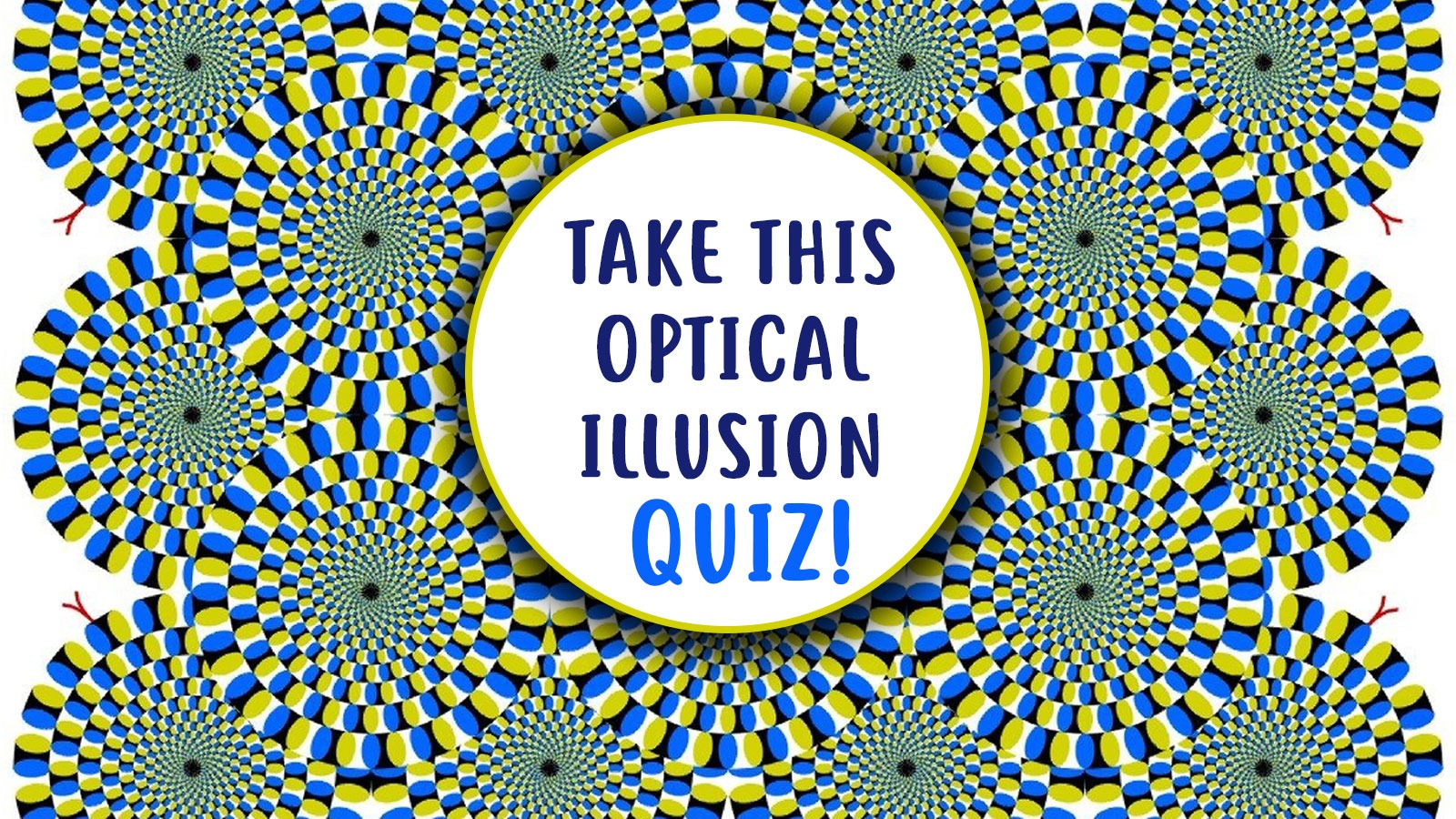Which yellow line is longer?
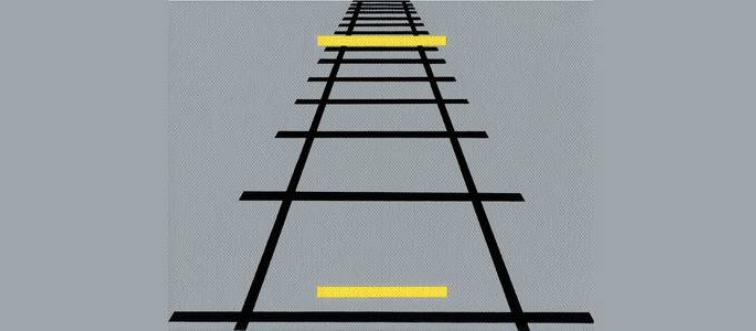
Mario Ponzo discovered the Ponzo Illusion in 1910. This visual illusion demonstrates the principle of foreshortening, a technique used in perspective drawing. In the Ponzo Illusion, two converging lines, often resembling railroad tracks, create the impression that lines of equal length, such as yellow lines placed between them, appear to be of different lengths due to the distortion caused by the
What color are the circles in between the lines?
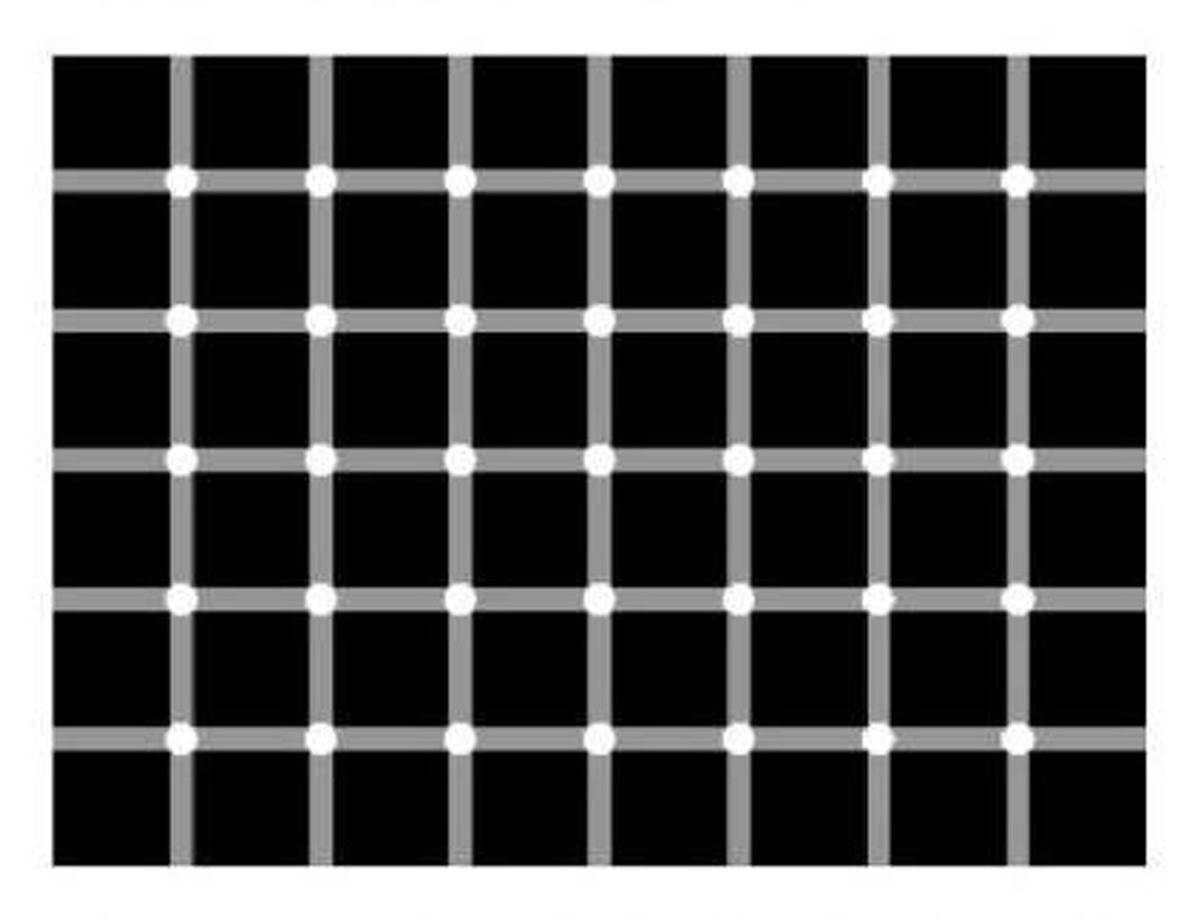
This is known as the scintillating grid illusion, where viewers perceive grey dots that seem to appear and disappear randomly at the intersections of a grid. In reality, the dots are white, and the illusion fades depending on the viewer's distance from the image or when focusing on a single dot.
What color is the background in this image?
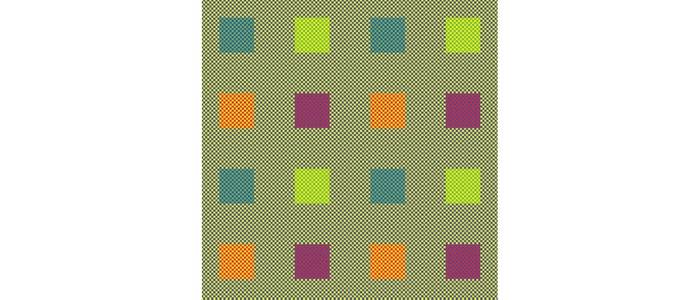
This illusion, created by Akiyoshi Kitaoka, features four squares in different colors set against what appears to be a grey background. However, the background is actually made up of tiny yellow and grey squares, similar to how colors are displayed on a TV screen.
What direction are these circles spinning in?
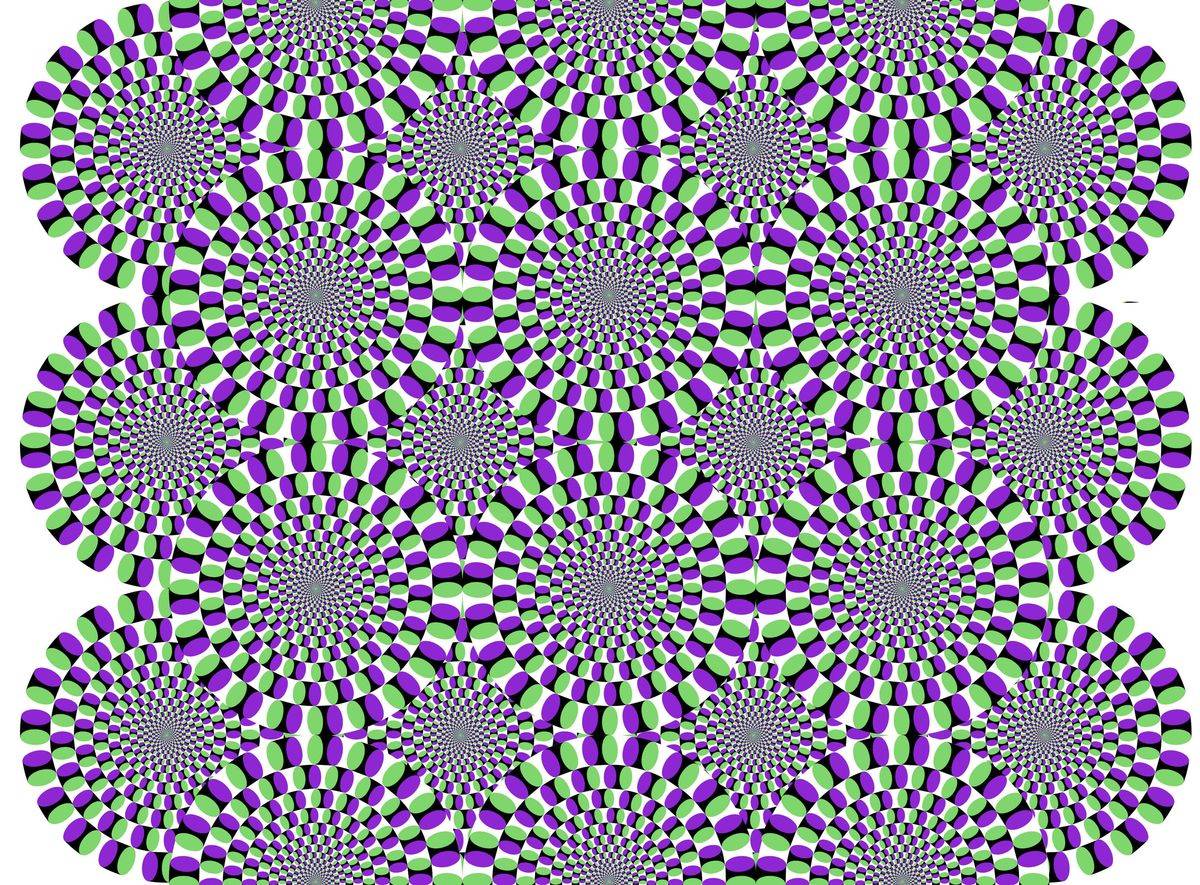
This image is an example of "rotating snakes," a peripheral drift illusion created by Akiyoshi Kitaoka. It features colored bands that give the illusion of circular motion, even though the image itself is completely static.
Are these lines parallel or sloping downwards?
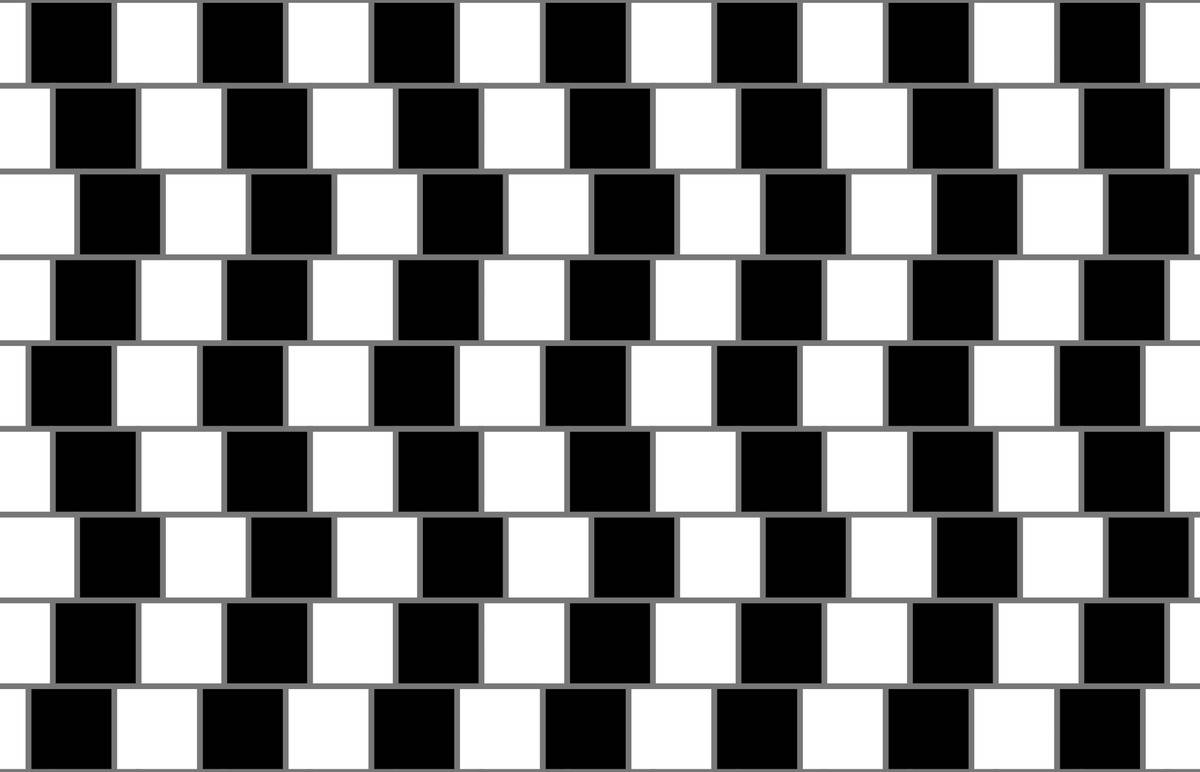
The café wall illusion gives the impression of sloping lines, even though all the lines are actually parallel. This illusion occurs when black and white tiles of equal size are separated by grey lines, causing the rows to appear as if they are slanting diagonally.
What is this a picture of?

What’s that in the sky? A chicken? No, it’s actually a church in Madeira Beach, Florida, though you wouldn’t be blamed for thinking it looks like a chicken. Known as the Church in the Sea, it is famous for its unintentional chicken-like facade, attracting both worshippers and tourists alike.
Which line, not including the arrows, is the longest?
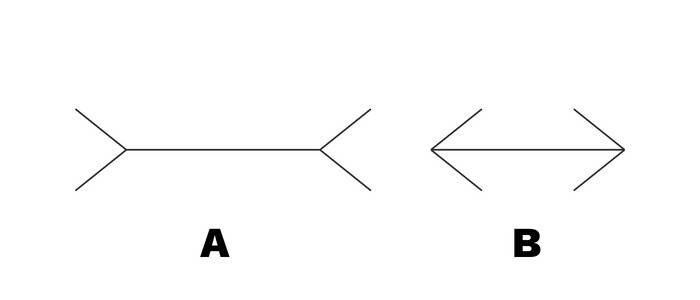
The Müller-Lyer illusion gives the impression of a longer line based on the direction of the arrows at each end, causing one line to appear shorter or longer than the other. In reality, both lines are of equal length.
What color are the white areas in this image?
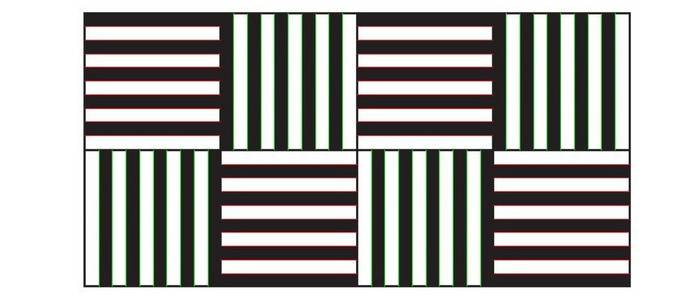
This phenomenon is referred to as the Watercolor Illusion. In this illusion, the white and black areas seem to take on a red or green hue because of the surrounding lines around the black bars, yet they remain light in color.
Which direction are the long lines facing?
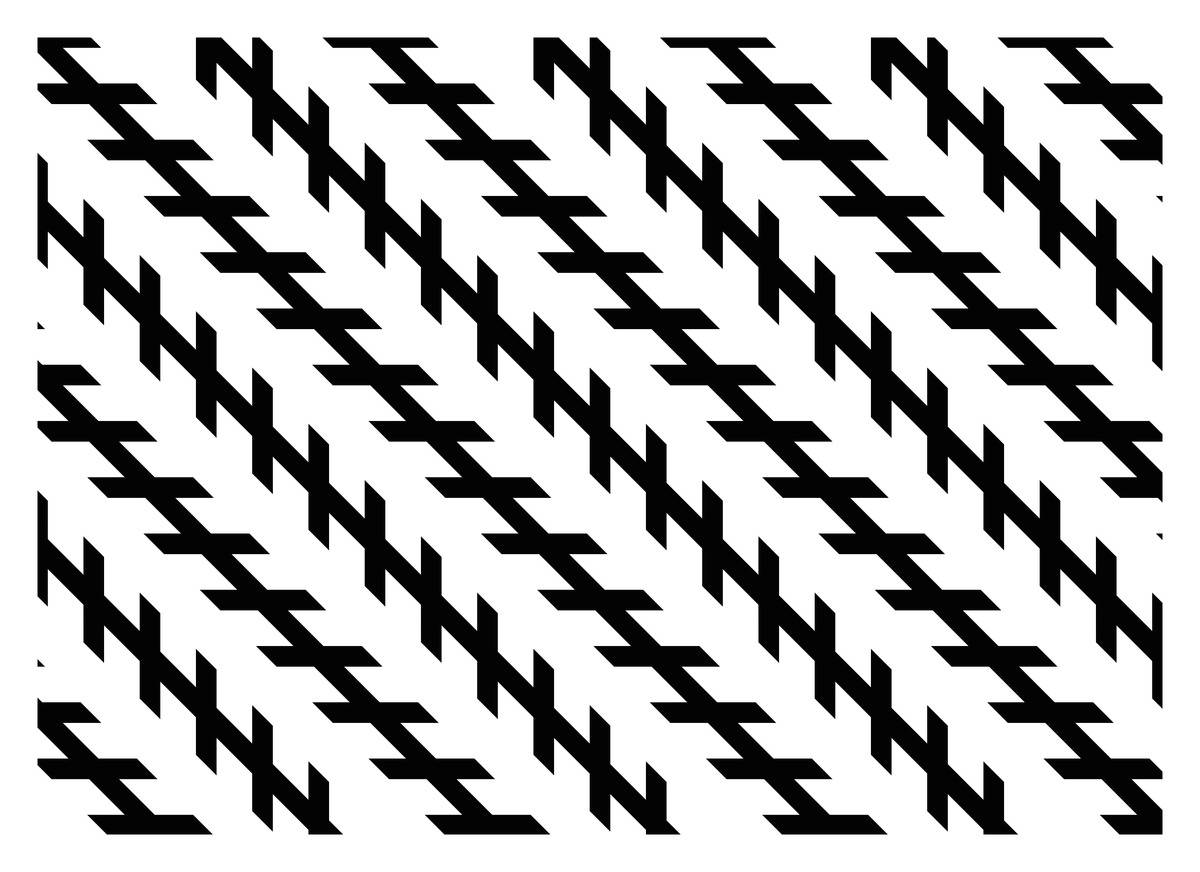
The Zöllner illusion is named after astrophysicist Johann Karl Friedrich Zöllner. It features parallel diagonal lines intersected by shorter lines, which creates the false perception that the diagonal lines are not parallel, even though they are.
What shape are the black segments making?
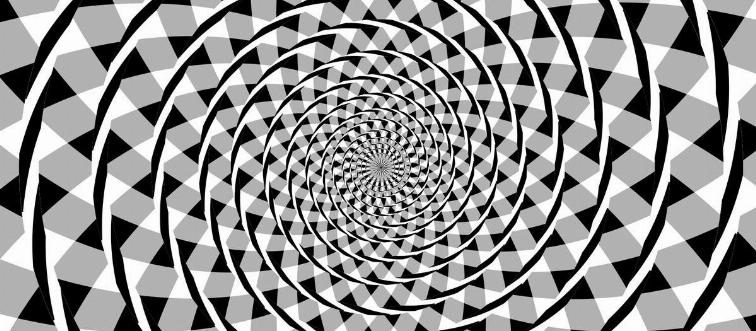
In the Fraser spiral illusion, the overlapping black segments along the line seem to spiral downward toward the center, but they are actually composed of a series of concentric circles.
What color is the girl's eye in the red-shaded area?
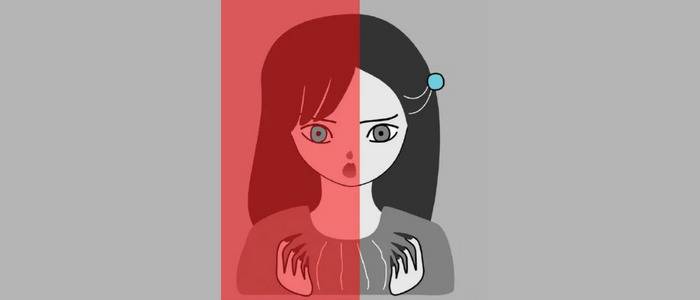
Although the girl's eye seems to appear turquoise in the red-shaded area on the left, it is actually the same shade of grey as her unfiltered grey eye on the right.
What direction is the central point in this image facing?
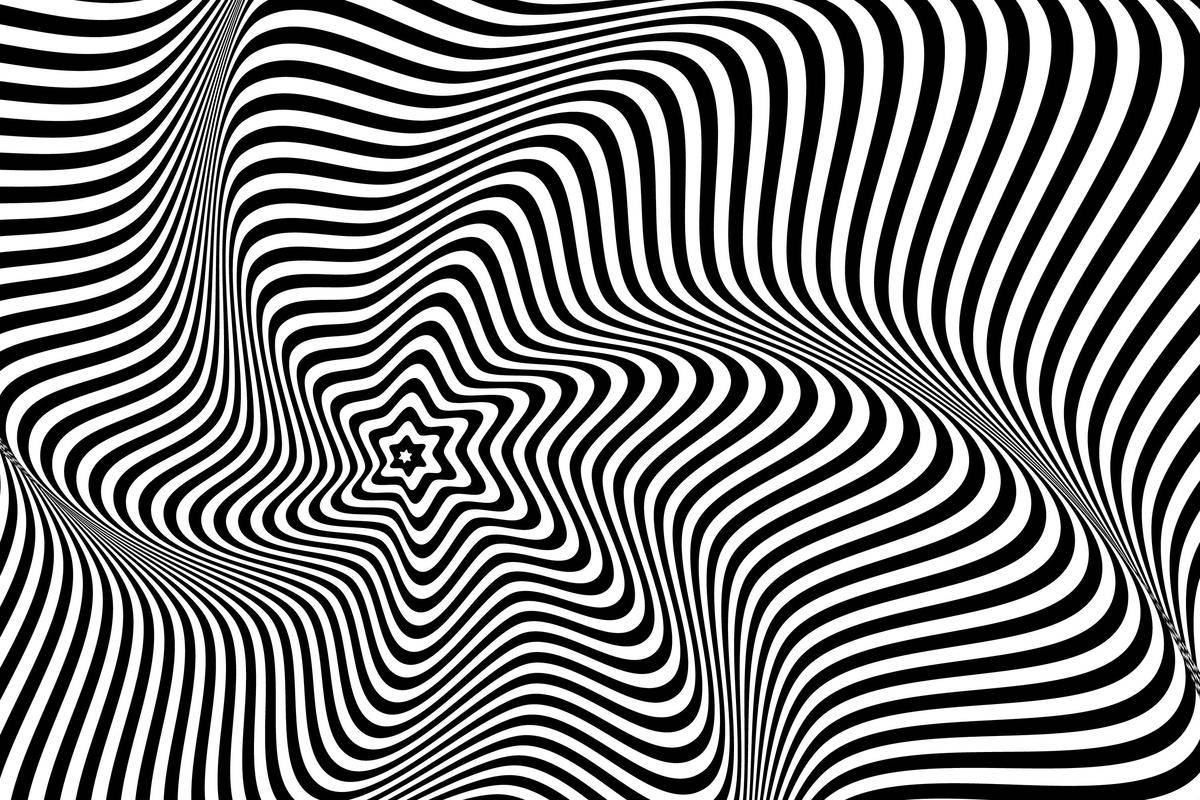
This illusion gives the impression of a central point that could be facing either outward or inward; however, it is actually facing neither direction, as it is purely a 2D image.
What happens when you stare at the cross in the center of this image?
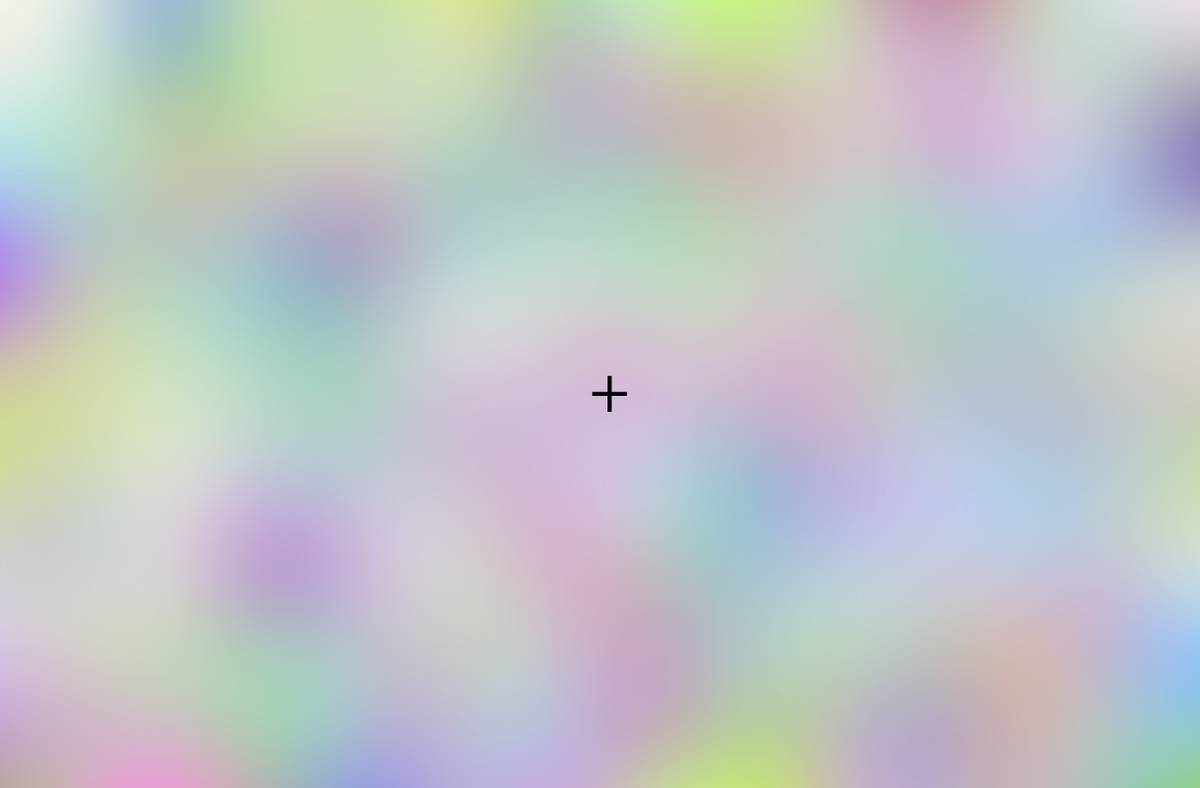
The Troxler effect is an optical illusion in which fixating on a central point causes the background of the image to seem to disappear entirely. In this instance, the background colors fade to grey.
What is this picture a close-up of?
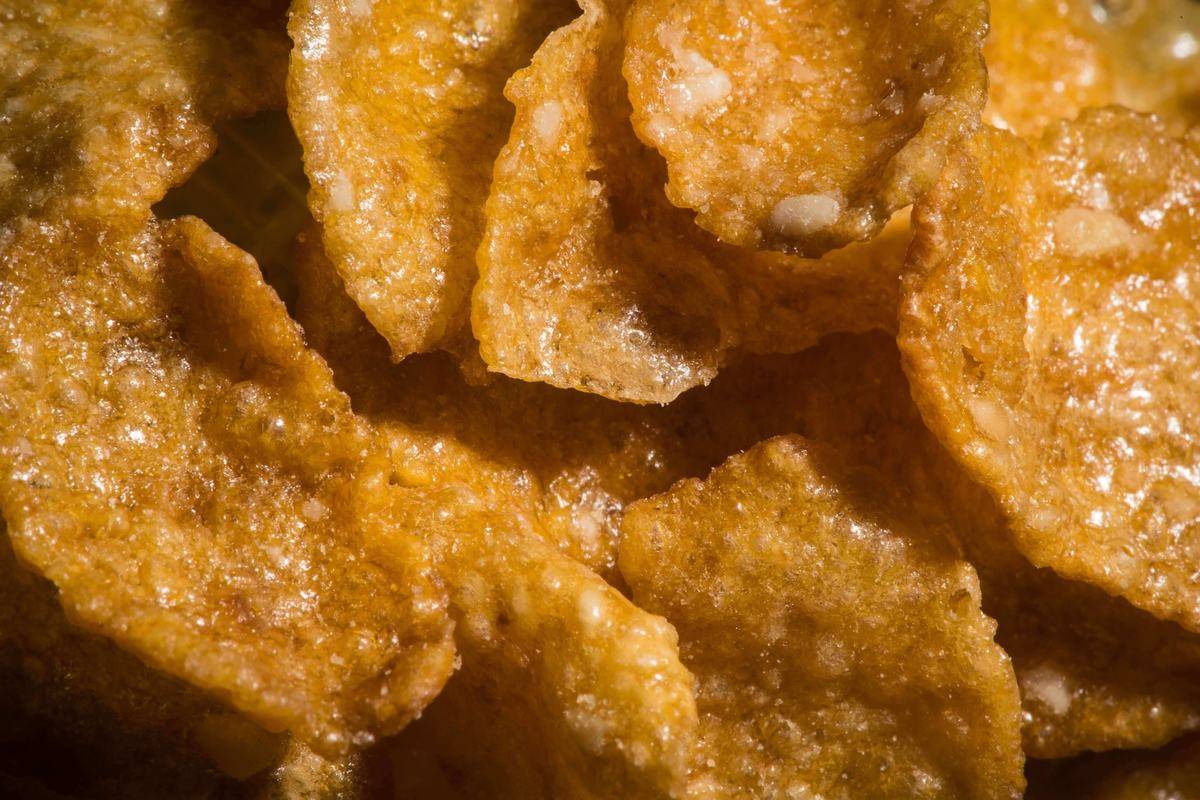
If you guessed cereal, you’re correct! Everyday objects can appear completely different when zoomed in, transforming something familiar into something alien. In this case, the reflection of sugar in the cereal resembles a cluster of amber.
For each of these images, which has the bigger central circle?
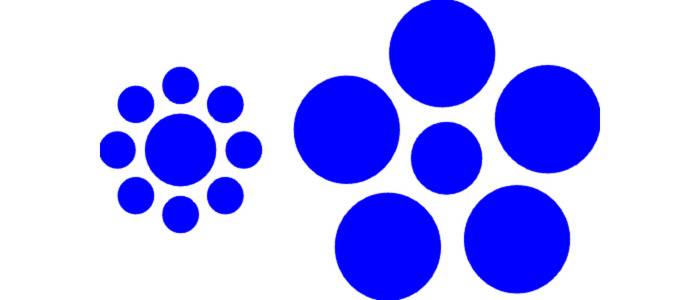
This image exemplifies the Ebbinghaus illusion, in which two circles of the same size are positioned next to each other—one surrounded by smaller circles and the other by larger circles—creating the illusion that they are different sizes.
Which grey bar is darker, A or B?
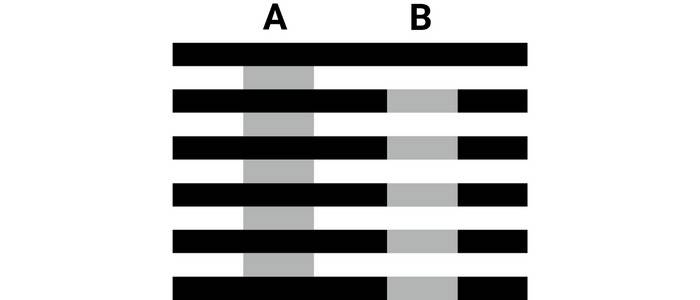
In White's Illusion, the brightness of the grey bars appears different due to the surrounding black bars, which seem to be either "behind" or in front of the grey bars. This creates the illusion that one grey bar is darker than the other, even though they are actually the same shade of grey.
Is this image still or moving?
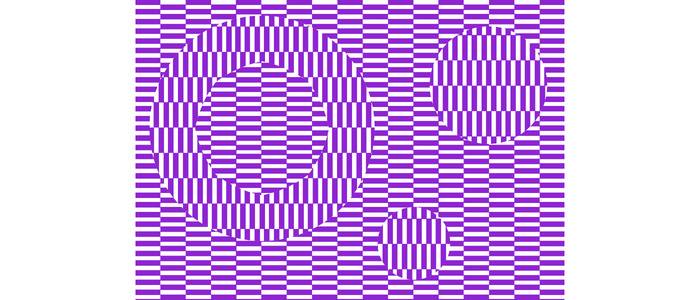
This image demonstrates the torsion illusion, where the circles seem to move in various directions despite being a static image. The circles give the impression of floating in the background.
Are the red lines straight?
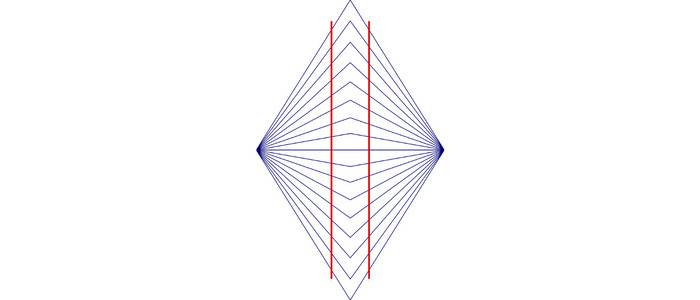
In Wundt's Illusion, discovered by Wilhelm Wundt in the 19th century, the red lines are actually straight but appear to be bowed toward the center due to the crooked lines behind them.
Which Circle Is The Darkest?
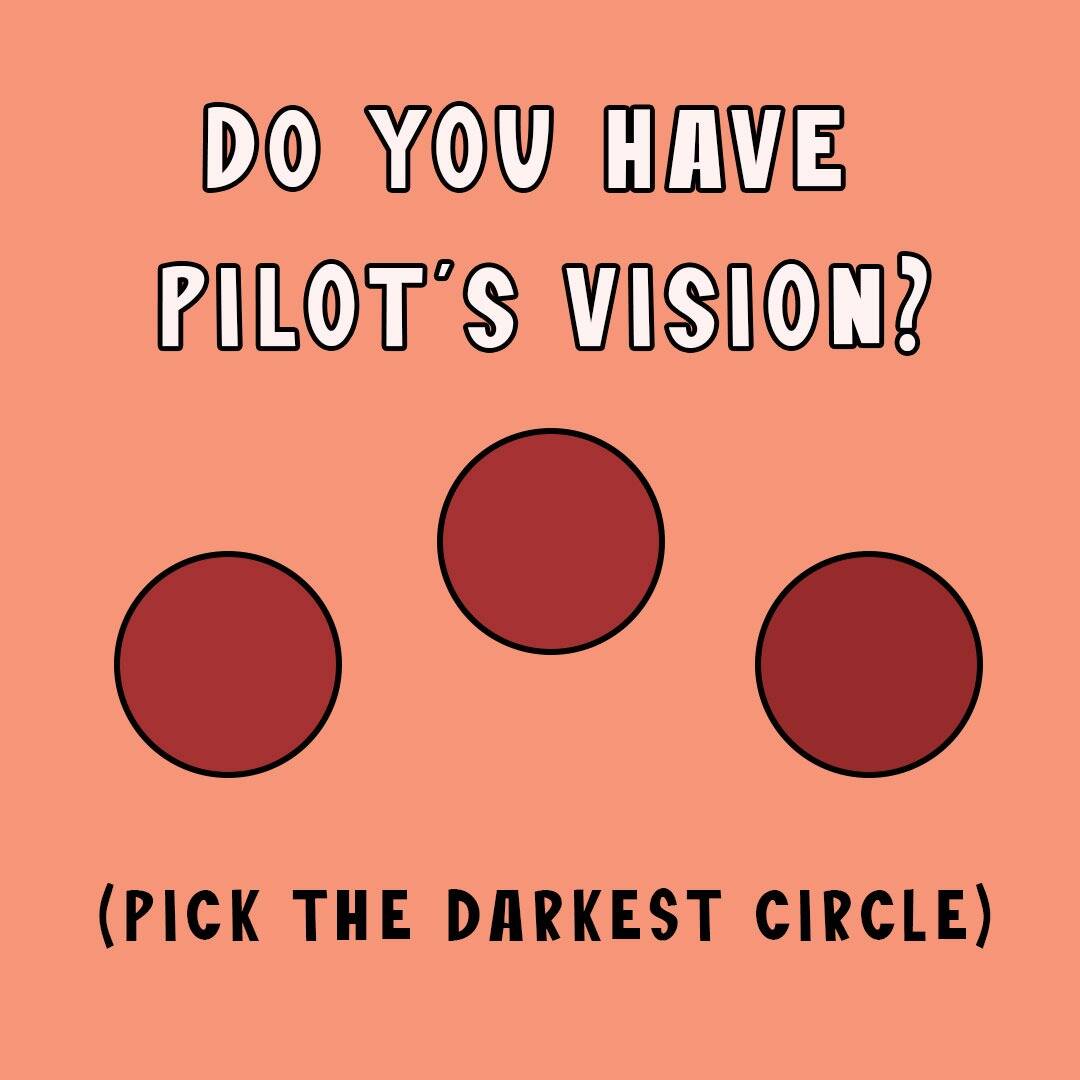
Although all of these circles appear to be the same color, one of them is actually slightly darker than the others. The darkest circle is located on the right-hand side.
Stare at the black dot in the center of the rings and move your head closer to the image. In which direction are the rings spinning?

This image depicts the Pinna illusion, where the inner rings appear to move counter-clockwise while the outer rings move clockwise as you move your head closer to the picture. This illusion arises from a delay between the regions of the brain that process visual information.
What do you see when you stare at the center of the grid?
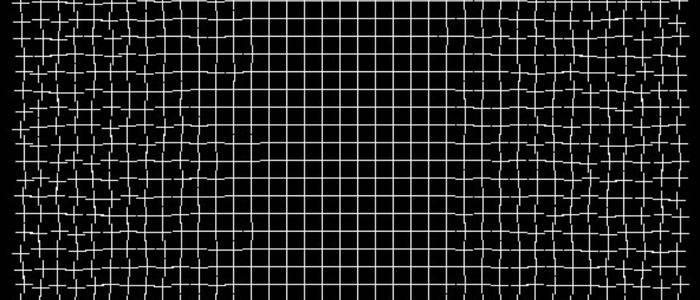
In the healing grid, created by Ryota Kanai, as the viewer focuses on the center of the grid, the jagged lines at the edges gradually seem to straighten out. This phenomenon illustrates how our brains favor regular patterns and attempt to impose them whenever possible.
How many squares are in this image?
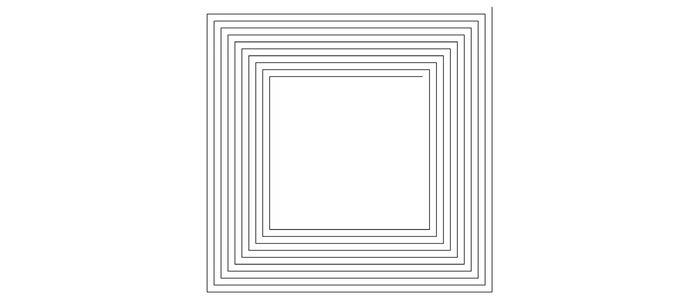
The squares in this image form one continuous line. Although they seem to be a series of nested squares, our brains rapidly interpret them as multiple distinct squares when we look at them.
What shape do you see at the ends of the lines?
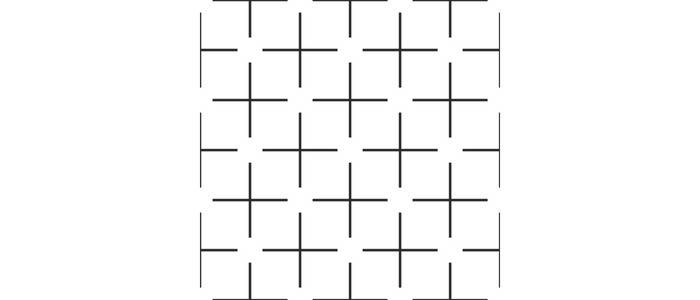
In this version of the Ehrenstein illusion, multiple lines create the appearance of squares that seem to be overlapped by circles, which look brighter than the background. These circles also give the impression of floating above the background, even though everything is the same shade of white.
What shape is the darker figure?
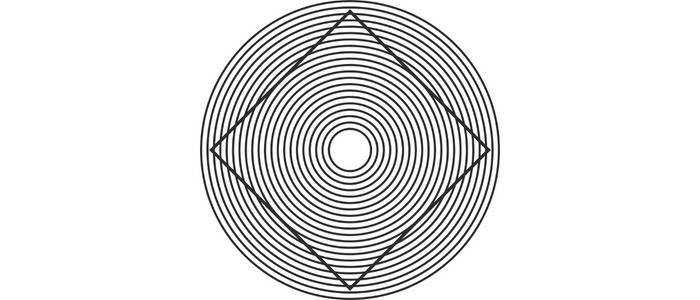
In Ehrenstein's square illusion, the central square appears curved due to the concentric circles in the background. As a result, the square looks warped and distorted, resembling a trapezoid or rhombus.
What number is in the center?
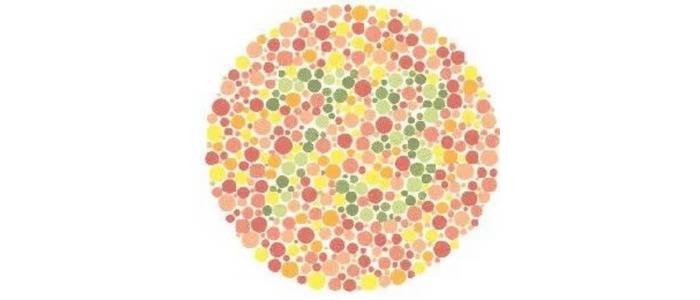
If you guessed 73, you’re correct! This image is a plate used for color blindness tests, commonly known as an Ishihara test. Individuals with color blindness see all the dots as the same color, while those with normal vision can distinguish between the two colors on the plate.
In what direction are the seeds spinning?
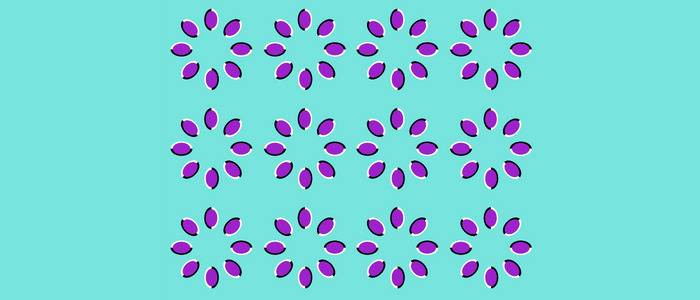
In this illusion, the purple seeds seem to move when you focus on the image. In reality, as with most illusions, our eyes are deceiving us, causing objects that are perfectly still to appear as if they are in motion.
What direction is the cube facing?
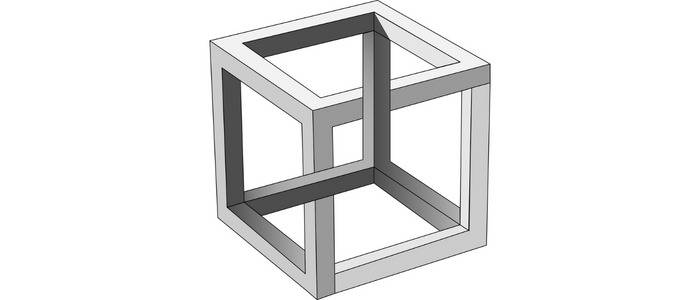
If you guessed that this cube is facing neither a single direction nor every direction, you’re correct! This is an Escher cube, also known as an impossible cube, which can be drawn but cannot be constructed. The cube also shifts perspective based on where you focus your attention.
What do you see when you first look at this image?
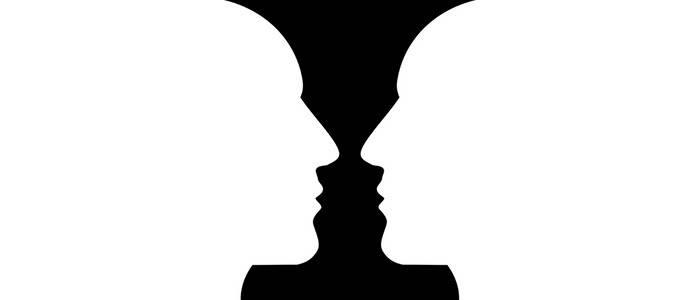
You could interpret this image as either a vase or two faces, and both interpretations are correct! This illusion is known as Rubin's vase and illustrates how our perception of images is influenced by visual cues and our memories.
What color is the background of the blue-colored area?
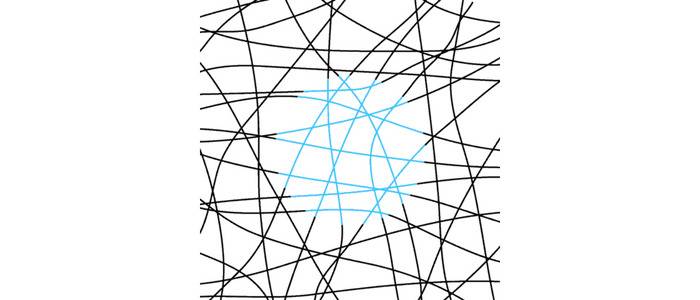
In this example of the neon color spreading effect, the blue-colored area appears to have no border. This effect creates the illusion that the blue is "spreading" and filling in the empty spaces, even though those areas remain white, similar to the glare produced by a neon light.
Starring at the center of this image, how many “rays” can you see?
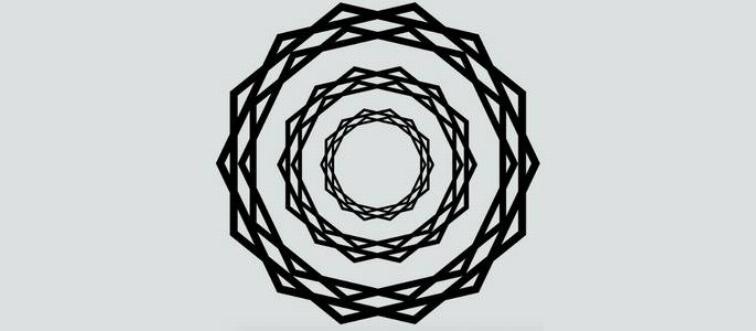
Michael Karlovich created this “scintillating starburst” as the logo for his design company, Recursia Studios. He believes that the brain perceives the spaces between the points as rays of light that seem to fluctuate as you move your gaze across the image.
